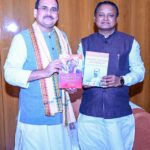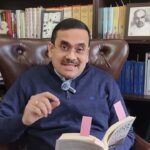Collective yearning for change
- By : Anirban Ganguly
- Category : Articles

Since the abrogation of Article 370, the suppressed aspirations of the people of J&K and Ladakh have found an outlet — paving the way for multi-layered transformation
The fifth anniversary of the abrogation of Article 370 passed last week on August 5. Even the most biased and prejudiced, whatever their public posturing and polemics, cannot privately deny that there has indeed been a sea change in the atmosphere and condition of Jammu & Kashmir (J&K) since that fateful day when, with a decisive and determined sweep, the vexatious Article 370 was finally done away with through Parliament. The nation was witness to the intense debate that took place in Parliament and one also saw how the opposition lacked one good and convincing argument on why Article 370 must stay, while the reasons on why it must be done away with were many and were convincing. In the course of the last five years, it has become amply evident that ever since the defanging of 370, J&K has surged ahead and Ladakh’s aspirations have also begun to be fulfilled. Fact based figures clearly point to this irreversible trend.
A staggering 1.27 crore tourists have visited the region since June 2023. From connectivity to infrastructure; the ongoing progress is rapid and tangible. The tourist inflow has been the highest since independence. One of the most discriminatory and gender-biased laws about which self-styled rights activists-agitators on Kashmir such as the likes of Gautam Navlakha, who shaped a career by espousing the cause of separatism in Kashmir, maintained a studied silence, has been reversed and women can now buy real-estates and transfer property to their children even if they marry a non-resident. For the first time since independence, more than a lakh people who had migrated from West Pakistan to Jammu after partition are being granted domicile rights and full citizenship, including the right to vote, property ownership rights and the right to government jobs.
For years, the CPIM has been marginally politically active in the Valley. Its leader in the Valley, Mohammed Yusuf Tarigami, for instance, was an MLA for a long period between 1996 and 2018 and yet, this party and its leaders who placard-gallivant in other parts of India speaking against discrimination and denial of constitutional rights, have remained silent on some of the most monstrous discriminations and denials that were in force in J&K for decades. Why was the CPI silent on the discrimination meted out to Dalits in J&K through a denial of constitutional and democratic rights? Why did these parties and other self-proclaimed champions of democratic rights not question the fact that the elections to the Block Development Councils were never held? Post abrogation when the Modi government pushed for elections to the BDC and when elections did take place finally, it saw a 98 per cent turnout for the first time. These parties and activists ignored the results and the democratic process or tried to brush it aside as an establishment-staged exercise. Never the ones to question the violent agenda of the separatists, they have always resisted any legitimate attempt at conferring legitimate rights on the people of J&K. They never questioned this denial because parties such as the CPIM and the CPI have always been soft on separatism by associating and supporting activists such as Gautam Navlakha who have, for years, since the late 1980s and early 1990s, peddled a ‘occupied Kashmir’ narrative in order to attract foreign funds and support with the ulterior agenda of keeping parts of India on the boil.
Kashmiri Pandits celebrated Navreh in their homeland Kashmir for the first time after 32 years. A deeply symbolic event that many active cartels in India had abroad had worked to prevent by ignoring that lost religious and cultural right or by suppressing its history. Another unthinkable in the cultural realm also happened, a Tirupati Balaji temple was consecrated in Jammu, thus firming up the tradition of varied worship in Kashmir which has always been the land of sages and saints, the cradle of Kashmir Saivism. 75 years after the conches had fallen silent and lamps snuffed out, Diwali was celebrated at the Mata Sharda Devi temple in Kupwara. The once famous Muharram procession returned to the streets of Srinagar after an enforced hiatus of 34 years. The enforced ban was put into effect by separatists and those political parties who hung on to power with the support of separatists. The communist parties, their leaders and intellectuals, who, in the aftermath of the abrogation, had enlisted dubious media fronts such as ‘NewsClick’ to disseminate a destabilizing narrative on J&K never spoke up in support of resuming Muharram processions, their protests and highlights have been selective and discriminatory, giving out their actual political intentions and agenda. The remarkable rise in the conviction of terror financing cases — 94 per cent — is what is raising the hackles of these pernicious satellites. It makes them unsure of their future, they see their heart-held agendas receive a blow, with their sources drying up, they feel their powerlessness and that is how it should be. Has one ever heard the CPIM and CPI or the Congress condemn terror-funding and call for action against its networks?
That there is a clear and established phase of peace in J&K is evident when one looks at the continuously reducing incidents of terror attacks between say 2018 and 2023, from 417 incidents, these have come down to less than 30, while stone pelting incidents, which even during 2018 were around 1,400 plus, have come down to zero in 2023. From 52 cases of shutdown in 2018 to zero cases of shutdown in the Valley today, the increasing ease of daily life is gradually seeping in the peoples’ psyche in the region. That this was possible could never have been imagined, that there could be a zero-shutdown life in the region was a narrative that the entrenched political establishment in the Valley and their amplifiers in the academia across India, very carefully avoided.
The G20 meeting in Srinagar and, before that, Y20 meeting in the same city, both the biggest international events of this quarter, were pulled through in a grand manner. Despite some international cacophony and some noise within political circles in India, primarily from those who have a depleting mandate and peoples’ base, the events served to present before the global community the multi-layered transformation taking place in the region.
The fact that Srinagar’s first multiplex was inaugurated and cinema has been making a come-back with vehemence after three decades, is indication enough of the aspiration and yearning for change at the grassroots, an aspiration that has now become enmeshed with and is driving the peoples’ quotidian living. Investment applications of Rs 66,000 crore have been received while 3000 MW capacity power projects have been revived. When I argue that a multi-layered transformation is in the offing in J&K, these are some of the indications – education, public health, and public infrastructure have all begun to receive priority, the result of which will be seen in course of time in an enhanced ease of living.
In his first address after the abrogation of 370, PM Modi had emphasized that the ‘rights of all denizens of India are equal and their responsibilities are equal too,’ it was an undeniable and axiomatic truth, not only did he articulate it, but over the last few years since that August in 2019, PM Modi has exerted himself and the system to realize this philosophical and constitutional truth. Its positive results are gradually emerging. They are enthusing the majority of Indians and are disturbing those who do not identify themselves with the destiny of India. Decades ago, when Dr Syama Prasad Mookerjee had called for the abrogation of 370, his cardinal and fundamental point was the same as made by PM Modi; he spoke of the need, the imperative, the necessity of extending the rights of the Constitution to all citizens of India and in equal measure and therefore in J&K too. That appeal is now being fulfilled.
















